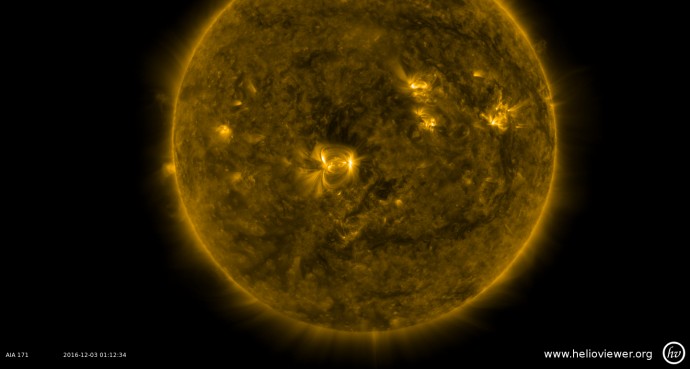|
Science and Astronomy Questions
|
|
| Watsisname | Date: Friday, 25.11.2016, 22:57 | Message # 946 |
 Galaxy Architect
Group: Global Moderators
 United States
United States
Messages: 2613
Status: Offline
| To google!
https://www.purdue.edu/newsroo....me.html

|
| |
| |
| Huesudo | Date: Monday, 28.11.2016, 21:57 | Message # 947 |
|
Observer
Group: Users
 Spain
Spain
Messages: 11
Status: Offline
| Without taking into account the crazy heat, would it be difficult to walk through Venus's atmosphere due to the high pressure? I have always had trouble separating pressure from density..
|
| |
| |
| Watsisname | Date: Tuesday, 29.11.2016, 03:26 | Message # 948 |
 Galaxy Architect
Group: Global Moderators
 United States
United States
Messages: 2613
Status: Offline
| You'd feel more resistance for sure, but walking would not be very difficult. It's much denser than air at Earth's surface, but also much less dense than water.
To calculate the density of the air, it might be most convenient to start with the ideal gas law:
PV=nRT
where P is the pressure, V is the volume, n is the number of moles of gas, R is the gas constant, and T is the temperature.
Let's see if we can pull density out of that formula somehow. Density is mass per volume:
ρ=m/V
and we can say that the mass is equal to the number of moles times the molar mass:
m=nM
Therefore the density is
ρ=nM/V
Solve for n:
n=ρV/M
Now plug that in place of n in the ideal gas law:
PV=(ρV/M)*RT
Now solve for ρ:
ρ=(PVM)/(VRT) = (PM)/(RT)
So the density is equal to the air pressure times its average molar mass, divided by the gas constant, divided by the temperature.
The air at Venus' surface has a pressure of 90atm (9.12*106 Pa), an average molar mass of 0.04345kg/mol, and a temperature of 735 Kelvin. The gas constant R is 8.314 Joules per kilogram per mole. This tells us that the density of the air at Venus' surface is about 65kg/m3, which is 53 times greater than at Earth's surface, or 6.5% the density of water.
Another helpful aid for thinking about the effect of this is to consider the force of the wind (or more precisely, the dynamic pressure). The dynamic pressure is proportional to the density of the air and the square of the wind speed. So if the air on Venus is 53 times denser, then you get the same wind pressure at only 14% of the wind speed. A 7m/s wind speed on Venus would feel like a 50m/s wind speed on Earth!

|
| |
| |
| Hornblower | Date: Saturday, 03.12.2016, 01:38 | Message # 949 |
 World Builder
Group: Users
 United States
United States
Messages: 714
Status: Offline
| I wonder what an ultraviolet camera would see if pointed at other stars. Seriously, this is our sun:


________________________________________________________________________
For example, what would a magnetar look like in infrared? Or maybe a blue giant or a red dwarf? I can't imagine how different they would be from our sun.
Edited by Hornblower - Saturday, 03.12.2016, 01:43 |
| |
| |
| Huesudo | Date: Saturday, 03.12.2016, 13:46 | Message # 950 |
|
Observer
Group: Users
 Spain
Spain
Messages: 11
Status: Offline
| https://www.youtube.com/watch?v=s_UVPLHAOAY
Know that feel Hornblower.
Edited by Huesudo - Saturday, 03.12.2016, 13:48 |
| |
| |
| Hornblower | Date: Saturday, 03.12.2016, 18:22 | Message # 951 |
 World Builder
Group: Users
 United States
United States
Messages: 714
Status: Offline
| Huesudo, it's blocked in the US 
|
| |
| |